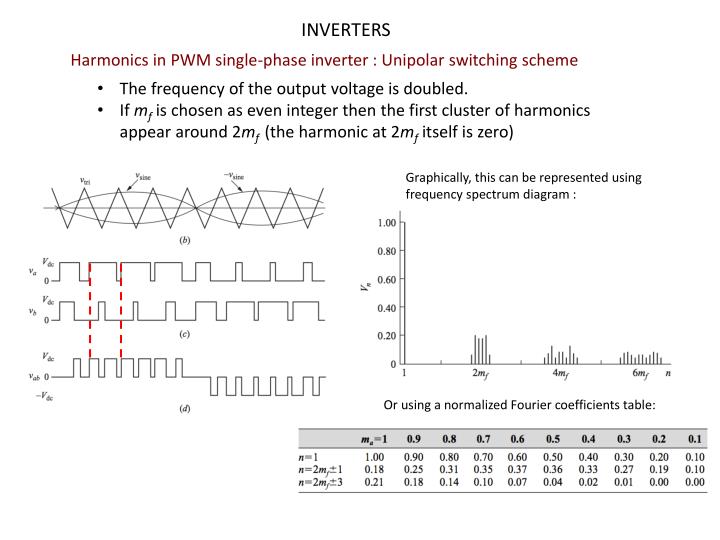

Depending on the instrument both the spike and square wave pulser may be either positive or negative. The spike pulse provides the shortest signals and their energy is distributed in the wide frequency band the square wave pulser allows smooth tuning until matching half-wave pulse duration with 2/f, where f is the actual frequency of the emitting probe - this increase the power of the initial pulse improving the penetration into material.

As for TOFD there is plenty of various factors such was wall thickness, material, frequency, etc. There is no a "panacea" solution for the firing pulse, which will be optimal for all kinds of inspection.
#BIPOLAR SQUARE WAVE VS UNIPOLAR SQUARE WAVE FULL#
Generally after 1 full bipolar cycle the amplitude of the signal is not increased, and although the frequency may be better defined (narrower bandwidth) the pulse becomes too long to use for things requiring good temporal resolution (like tip sizing and thickness measurement). You can also adjust the probe bandwidth with the standard unipolar or single cycle bipolar pulse by tuning the pulse duration to slightly longer or slightly shorter than the natural frequency. Conversely, the fewer the cycles used in the applied voltage the broader will be the bandwidth. This has the effect of making a narrower bandwidth of the frequency output from the probe vibration. If you continue to apply another cycle so you have 2 bi-polar pulses (or more) a short wave-train is made and the pulse is considered a Tone-Burst.Īs you increase from a uni-polar pulse to a bipolar pulse to a tone burst you increase the defined frequency of element vibration so it is more and more centred on the driving frequency. With a single full cycle you have made a bi-polar pulse. By configuring the pulser to go to a positive half cycle after completing the negative half cycle you have effectively given the probe a pulse that mimics its natural frequency (assuming the pulse-duration was correctly applied). In some cases a very significant increase in element displacement can be generated if the rise in voltage continues to an equal amplitude in the positive direction where it would also be held for a duration equal to the half cycle time of the element. The "rise-time" is not the pulse-duration but is instead how fast the negative voltage is made to return to zero. The hold-down time is operator controlled and considered the "duration".

The unipolar square wave excitation simply generates a voltage (usually negative) and holds it down for the duration of the natural half-cycle time of the piezo element it is driving. Re: Pulse mode in PA/TOFD equipment In Reply to Arman at 09:39 Sep-06-2016 (Opening).Īrman, The square wave pulser has become popular and generally replaces the "spike" pulser based on the thyratron. Taken together, our result suggests that permeabilization of the membrane at multiple sites without affecting cell survivability may account for the improvements in transfection efficiency observed with bipolar oscillating electric fields.R & D, Materials Research Institute, Canada, Joined Nov 1998, With unipolar square wave or single square pulse, the membrane is permeabilized either on one side or asymmetrically. Qualitative comparison of cell permeabilization induced by the three types of wave forms and monitored by ethidium bromide uptake revealed that only the bipolar square wave permeabilizes the cell membrane symmetrically at the two hemispheres facing the electrodes. In the range of electric field strength used for optimum transfection, the survivability of electropermeabilized cells was comparable between the unipolar and bipolar square waves but fell considerably with the single square pulse. Results show that a bipolar square wave is, at least, 1.7- and 5.5-fold more efficient than the unipolar square wave and single square pulse, respectively. Using the plasmid DNA pSV2-neo (which, when integrated into the cellular genome confers resistance to the antibiotic G418 for selection), we examined and compared the transfection efficiency on NIH 3T3 cells electropermeabilized by applying a sequence of high-frequency unipolar or bipolar square waves or a single square pulse.


 0 kommentar(er)
0 kommentar(er)
